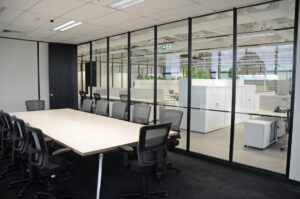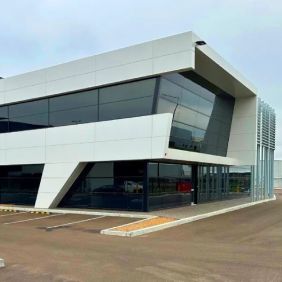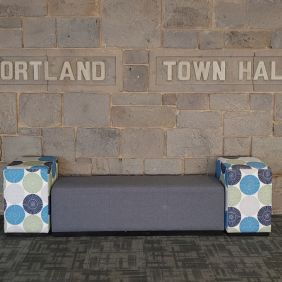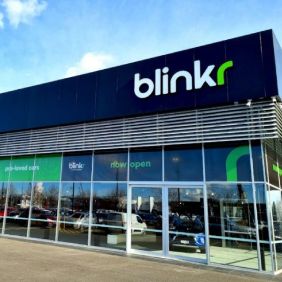Are you looking for ways to transform your existing office into a smart workspace? Whether you are new in business or have been in the industry for a while, a smart office is a great option. However, you need to be conversant with the process before you can actually implement it.
While it may sound like a simple concept, you need to be clear on your objectives and what you intend to achieve. The purpose of this guide is to help you unlock some gridlock and provide all the necessary information about smart offices.
What Is a Smart Office?
A smart office is an environment that uses technology to allow seamless communication and collaboration between employees. This can be done through the use of computers, mobile devices, and other forms of communication and collaboration tools.
done through the use of computers, mobile devices, and other forms of communication and collaboration tools.
A smart office usually contains:
- Computers: Used for a variety of tasks such as word processing, spreadsheet creation, and presentations
- Internet connection: Needed for email, VoIP calls, and web browsing
- Printers: Used for printing documents, pictures, and other materials
- Storage devices: Used for storing data and files
- Mobile devices: Used for accessing email, calendars, and other work-related information while on the go
What Are the Benefits of a Smart Office?
There are many benefits of having a smart office, which include:
- Increased productivity: A smart office can help employees be more productive by providing them with the tools they need to work more efficiently. For example, employees can use computers to do research, create documents, and make presentations.
- Improved communication and collaboration: A smart office can also improve communication and collaboration between employees. With the right tools, employees can easily share files, work on projects together, and stay in touch with each other.
- Reduced costs: A smart office can also help reduce costs. For example, by using VoIP technology, businesses can save on long-distance calling charges. In addition, by using storage devices, businesses can save on the cost of buying paper and ink.
- Seamless Workflow: By using a smart office, businesses can achieve a seamless workflow. This means that all the processes in the office are streamlined and efficient. For example, employees can use computers to do their work, and then save their files on storage devices. When they need to access these files, they can simply retrieve them from the storage devices.
What Are the Steps to Create a Smart Office?
There are a few steps you need to take in order to create a smart office:
- Define your objectives: First, you need to define your objectives. What do you want to achieve with your smart office? Do you want
 to increase productivity? Improve communication and collaboration? Reduce costs? Once you have defined your objectives, you can start looking for the right tools to help you achieve them.
to increase productivity? Improve communication and collaboration? Reduce costs? Once you have defined your objectives, you can start looking for the right tools to help you achieve them. - Choose the right tools: There are many different types of tools available, so you need to choose the right ones for your needs. If you want to increase productivity, you may want to consider computers, internet connections, printers, and storage devices. If you want to improve communication and collaboration, you may want to consider mobile devices, VoIP, and file-sharing software.
- Implement the tools: Once you have chosen the right tools, you need to implement them in your office. This may require some changes in your office layout and infrastructure. For example, you may need to install VoIP in your office, or set up a file-sharing server.
- Train your employees: After you have implemented the tools, you need to train your employees on how to use them. This is important so that they can maximize their productivity and benefit from the features of the smart office.
- Evaluate and adjust: Finally, you need to evaluate the results of your smart office. Are your employees more productive? Are communication and collaboration improved? Are costs reduced? If not, you may need to adjust your tools or office layout.
What Furniture is Ideal for a Smart Office?
When setting up a smart office, it is important to choose the right type of furniture. Some factors you may want to consider include:
- The size of your office: You need to make sure that you have enough space for all the furniture and equipment you need.
- The type of work you do: If you do a lot of computer work, you may want to consider a desk with a built-in keyboard tray.
- The number of employees: You need to make sure that you have enough furniture for all your employees.
- The budget: You need to set a budget for the furniture and stick to it.
Some examples of furniture that would be ideal for a smart office include:
- Desks with built-in keyboard trays: These desks are ideal for computer work. What this means is that you will not need to get additional space on your desk for the computer keyboard.
- Filing cabinets: These are ideal for storing documents and keeping your office organized.
- Bookcases: These are ideal for storing books, manuals, and other materials.
- Comfortable chairs: You need to make sure that your employees are comfortable so that they can work efficiently.
In this day and age, technology is constantly changing and evolving. This means that businesses need to change and evolve with it in order to stay competitive. One way businesses can do this is by setting up a smart office. A smart office is an office that uses technology to improve productivity, communication, and collaboration. By taking the time to set up a smart office, businesses can reap many benefits.
Creating a smart office is a great way to improve productivity, communication, and collaboration in your business. By taking the time to set up a smart office, you can ensure that your business is able to stay ahead of the curve and compete with other businesses.
Closing Thoughts
You can keep up with the changes in the technological world by creating a smart workspace. We believe that this informative guide has given you the tools you need to do just that! You now know how to define your objectives, choose the right tools, implement them in your office, train your employees on their use, and evaluate the results. What’s left is for you to get started!









